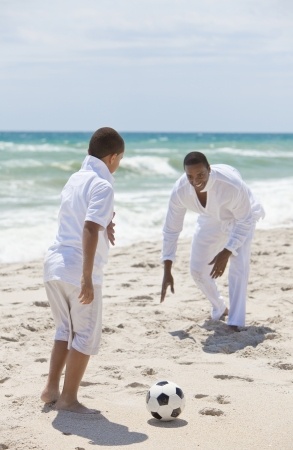While it’s true that hemophiliacs need to avoid playing intensely physical contact sports like football, boxing or rugby, many people with hemophilia do participate in other sports on a regular basis.
In fact, staying active is even more important for hemophiliacs than it is for people without the disease, since a strong body is better protected from bleeds.
As a hemophiliac, how can you balance the risks and benefits of playing sports? How can you maximize your safety while playing? And what should you do when bleeds happen during training or exercise?
 Here are eight ways to stay safe and reduce your risk while playing sports or training:
Here are eight ways to stay safe and reduce your risk while playing sports or training:
WAIT! Before you begin a training program or sign up for a sport, get a full musculoskeletal exam. Your HTC can provide this exam, which can help identify muscles or joints that need special attention or conditioning.
- Stretch thoroughly. Warming up your body before diving right into exercise is especially important for hemophiliacs. Stretch slowly, holding each stretch for 30 seconds. Gradually increase stretch repetitions and duration. Don’t bounce.
The Hemophilia Federation has a video of basic stretches to do before going for a walk or run.
- If your sport has a season, start conditioning early. The National Hemophilia Foundation notes that a total conditioning program includes:
- stretching for improving flexibility
- the use of resistance equipment or weight training for increasing strength
- aerobic training for improving endurance
- practicing skills specific to the sport
- Train with lighter weights and more reps. NEVER train past the “point of failure.” Weight training is a safe sport for most hemophiliacs. In fact, in this study, hemophilia patients who participated in resistance training experienced a “marked decrease in bleeding [frequency], as well as severity.”
However, power lifting is not safe for people with bleeding disorders, as sudden, heavy lifting can cause muscle tears and joint trauma, and thus serious bleeds.
- Log your bleeds and treatments. Bleeding into joints is common in people with hemophilia, and rare in people with VWD and platelet disorders, according to Hemophilia of Georgia.
By logging your bleeds carefully, you can get a sense of which joints and muscles may be more susceptible to bleeding. Spend more time carefully stretching these areas before you start playing sports.
There are now several smartphone apps available to help you keep track of bleeds and infusions, including MicroHealth Hemophilia, FactorTrack and MyFactor. Make sure the app you choose lists the factor you use.
- Ask your HTC for training guidance. You can also find recommended training schedules for children, teens and adults in the appendices of this National Hemophilia Federation PDF.
- Tailor your prophylaxis schedule. Depending on the severity of your hemophilia, and the sports you play, your hematologist can recommend the best frequency and/or time(s) of day for prophylaxis infusion. Some patients on prophylactics who play sports infuse just before a game or match, while others may infuse “on demand.”
- Rest when you’re recovering from a bleed. Your body needs time and care to recover; continuing to train or play sports during this time will only set you back, and can cause more damage to the joint(s) or muscle(s). The Canadian Hemophilia Society recommends using the RICE (rest, ice, compress, elevate) method to help slow bleeds.
Continue to use the RICE protocol while you heal.
- Be your own best advocate. No one knows your body like you do—so if you feel that a certain exercise, drill or match might be harmful for you, skip it.
Hemophilia doesn’t mean you can’t play sports. Tell us how you work out on Facebook, or get in touch via email with any questions or suggestions.
Resources:
http://www.livingwithhemophilia.ca/managing/fitness-exercise.php
http://www.hemophiliafed.org/news-stories/2013/08/runningwalking-stretching-video/
http://www.hemophilia.org/sites/default/files/document/files/PlayingItSafe.pdf http://www.ncbi.nlm.nih.gov/pubmed/11886461
http://www.hog.org/handbook/article/3/33/joint-bleeds
http://www.medprorx.com/factor-viii-replacement-therapies/
http://www.hemophilia.ca/files/Chapter 04.pdf
The information herein may not be construed as medical advice. The medical information on this site is provided as an information resource only, and is not to be used or relied on for any diagnostic or treatment purposes. It should not be used as a substitute for professional diagnosis and treatment. It is best to obtain medical recommendations from your physician.
